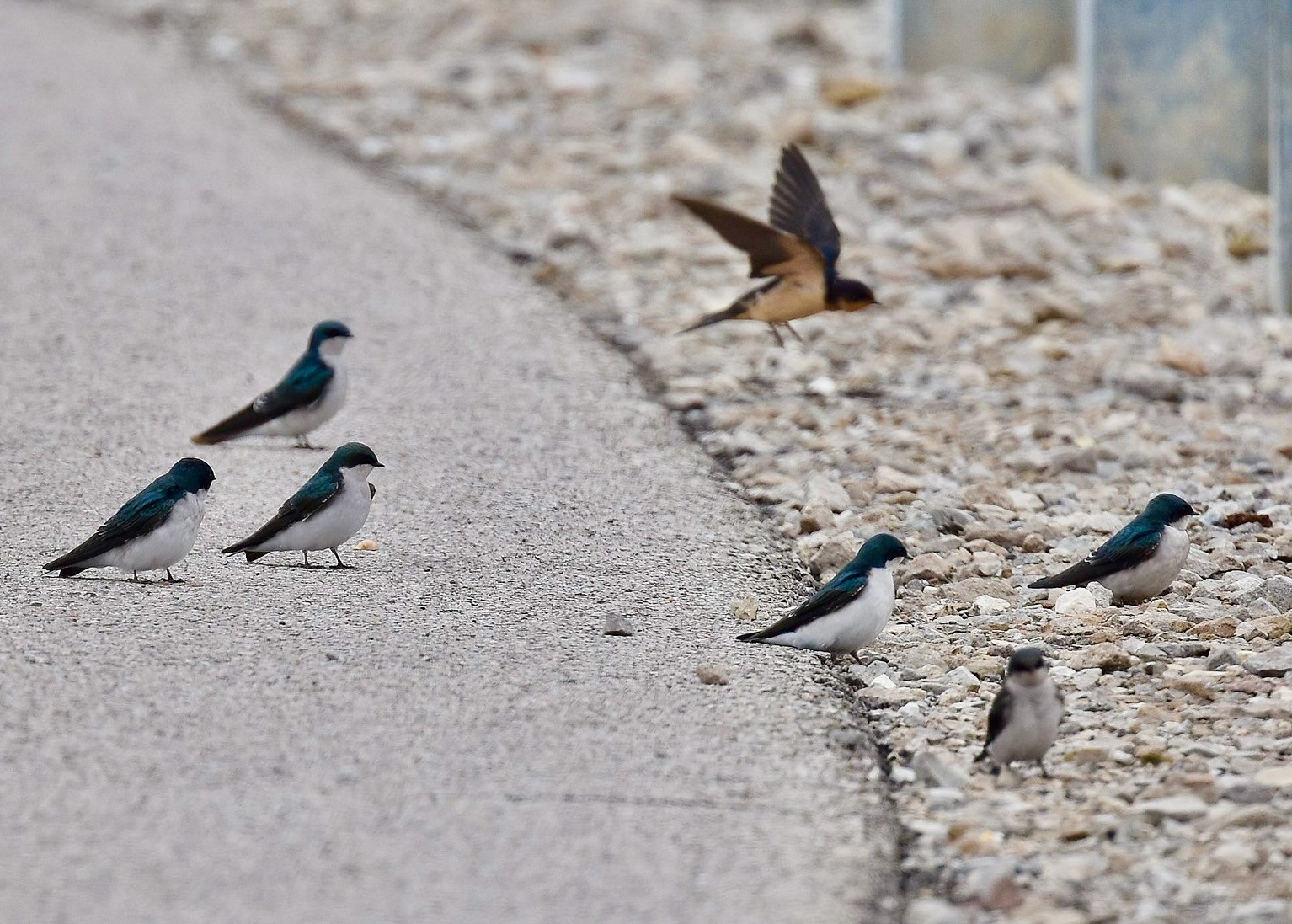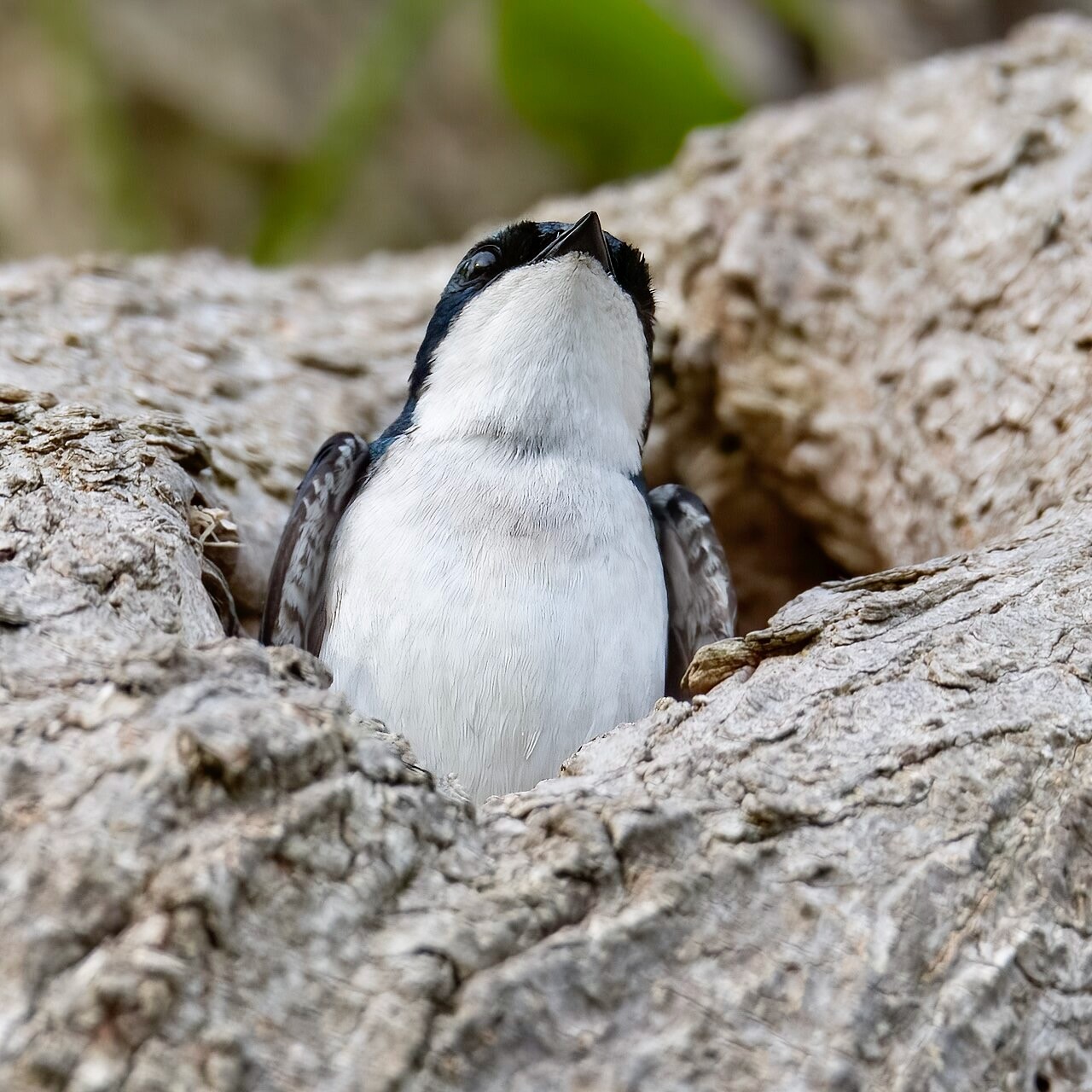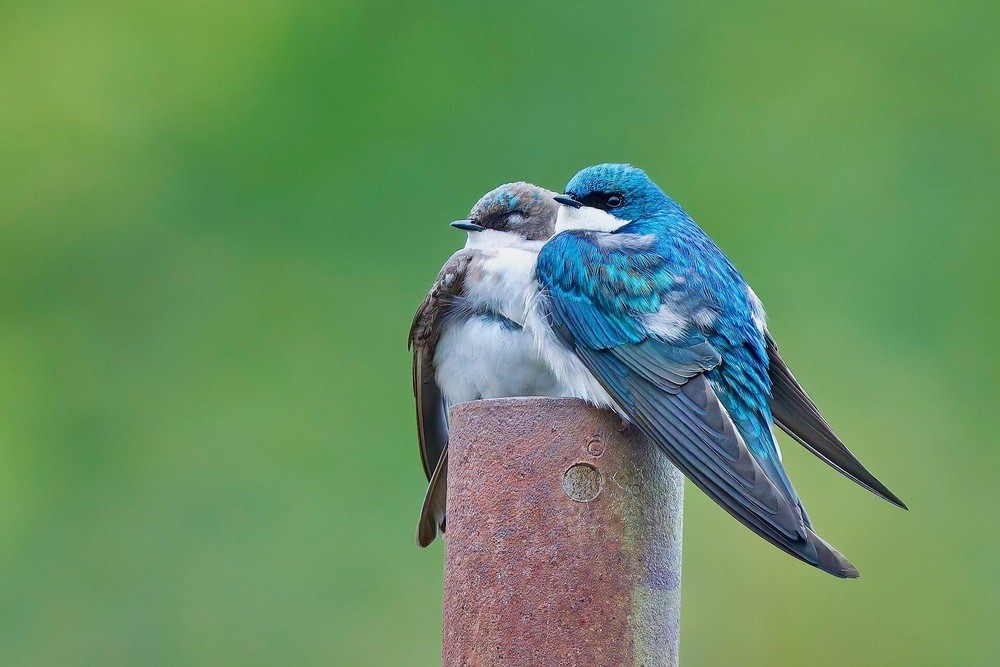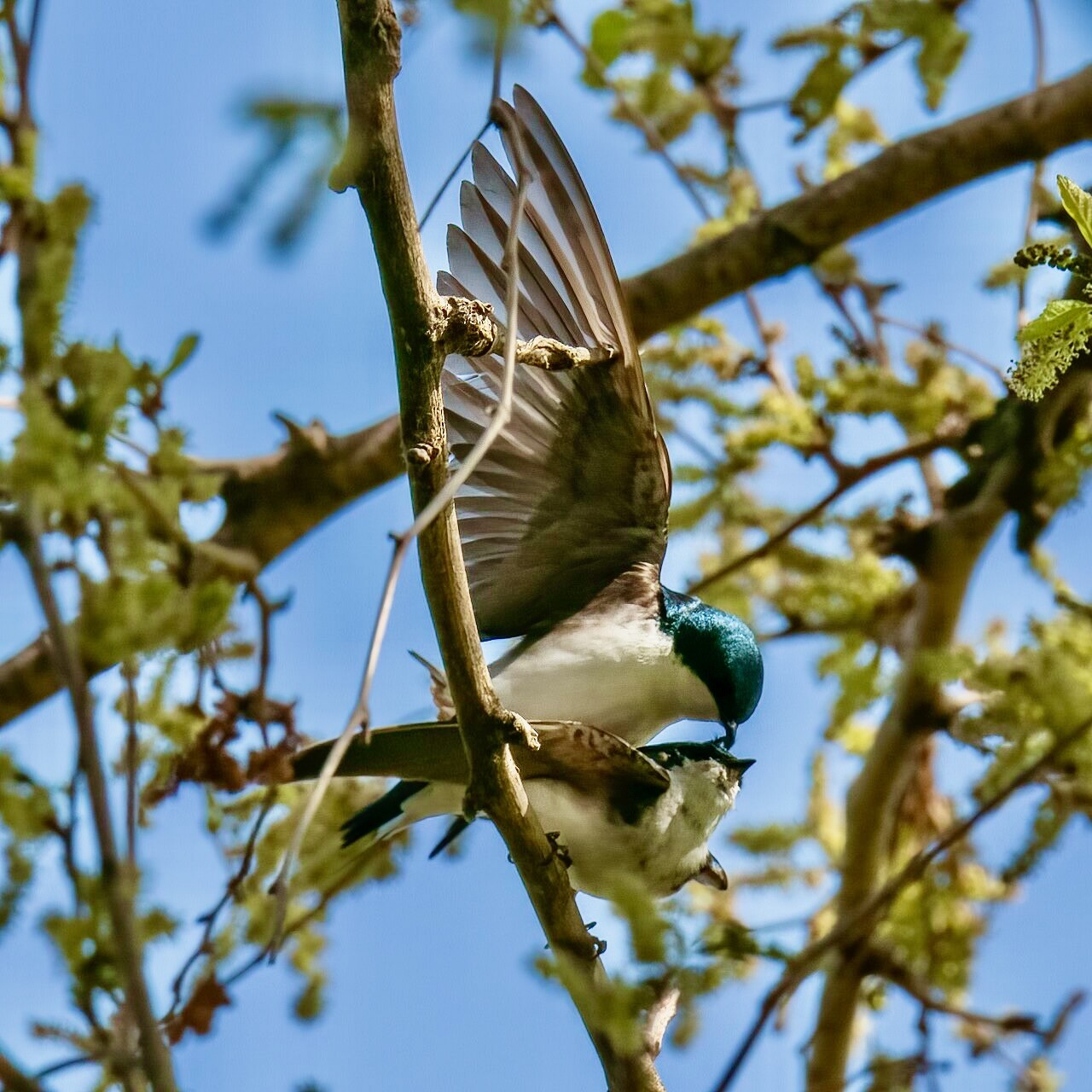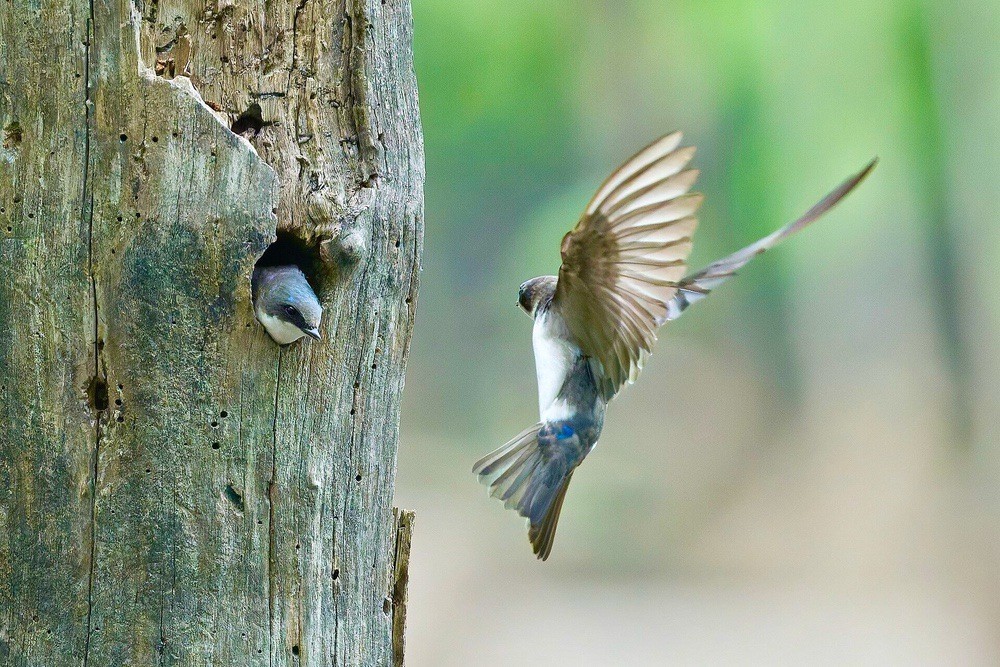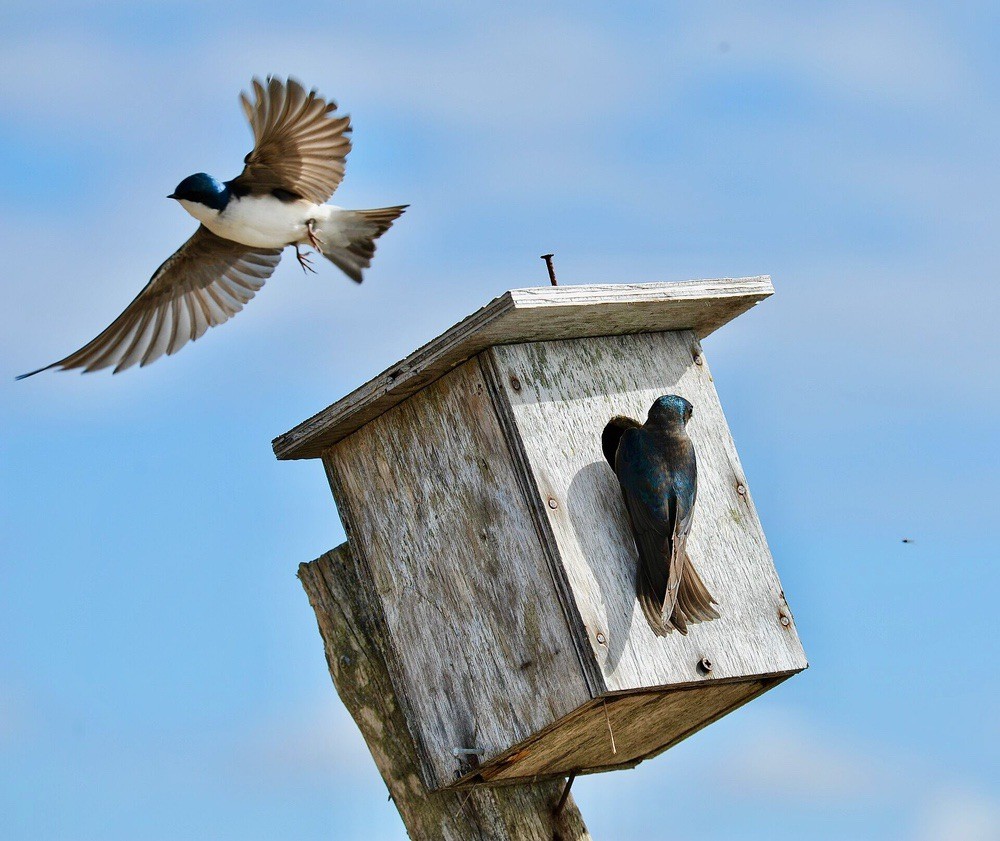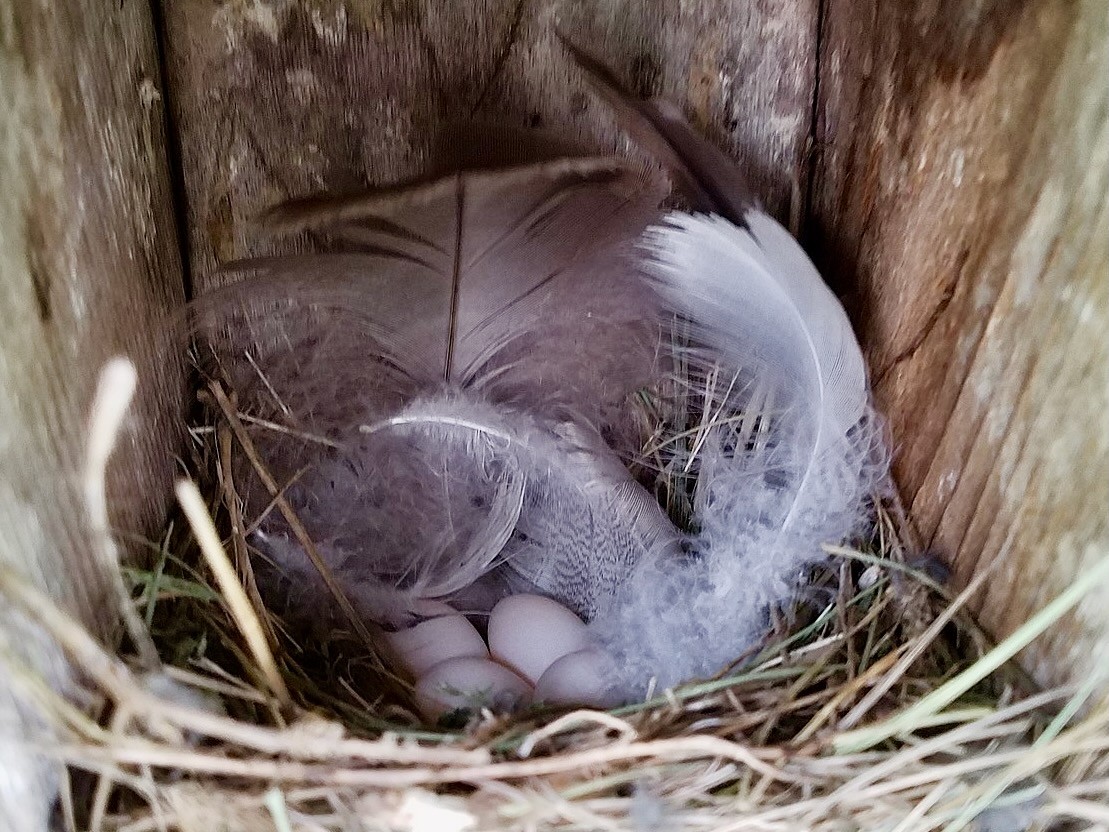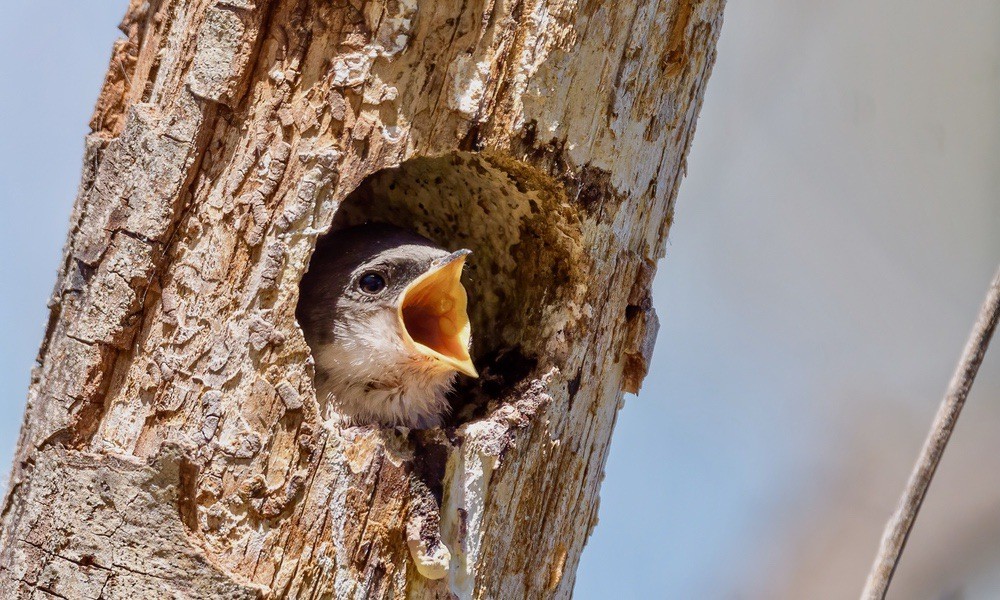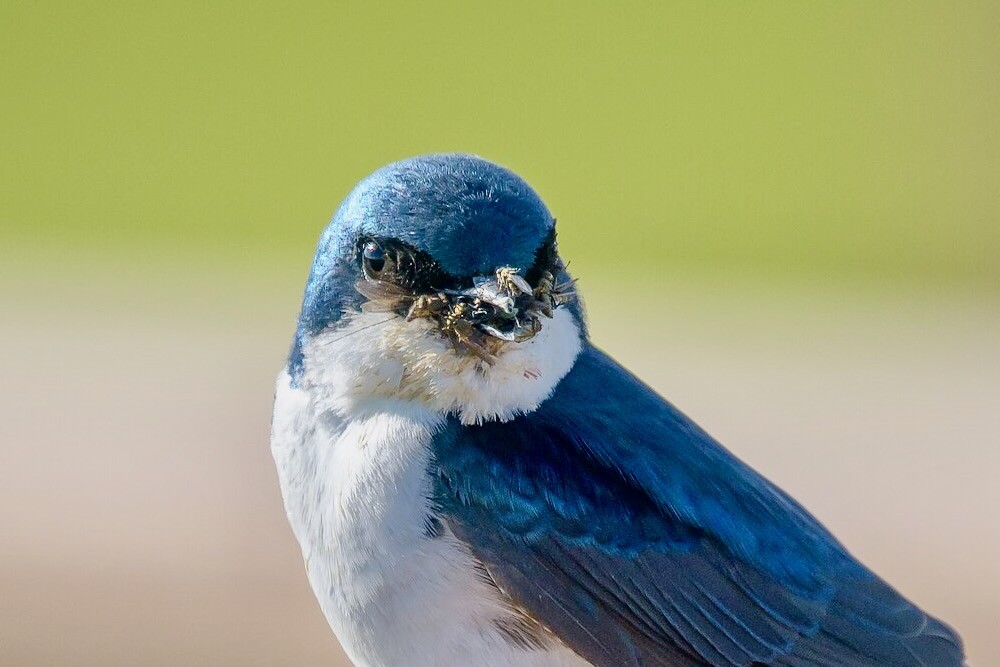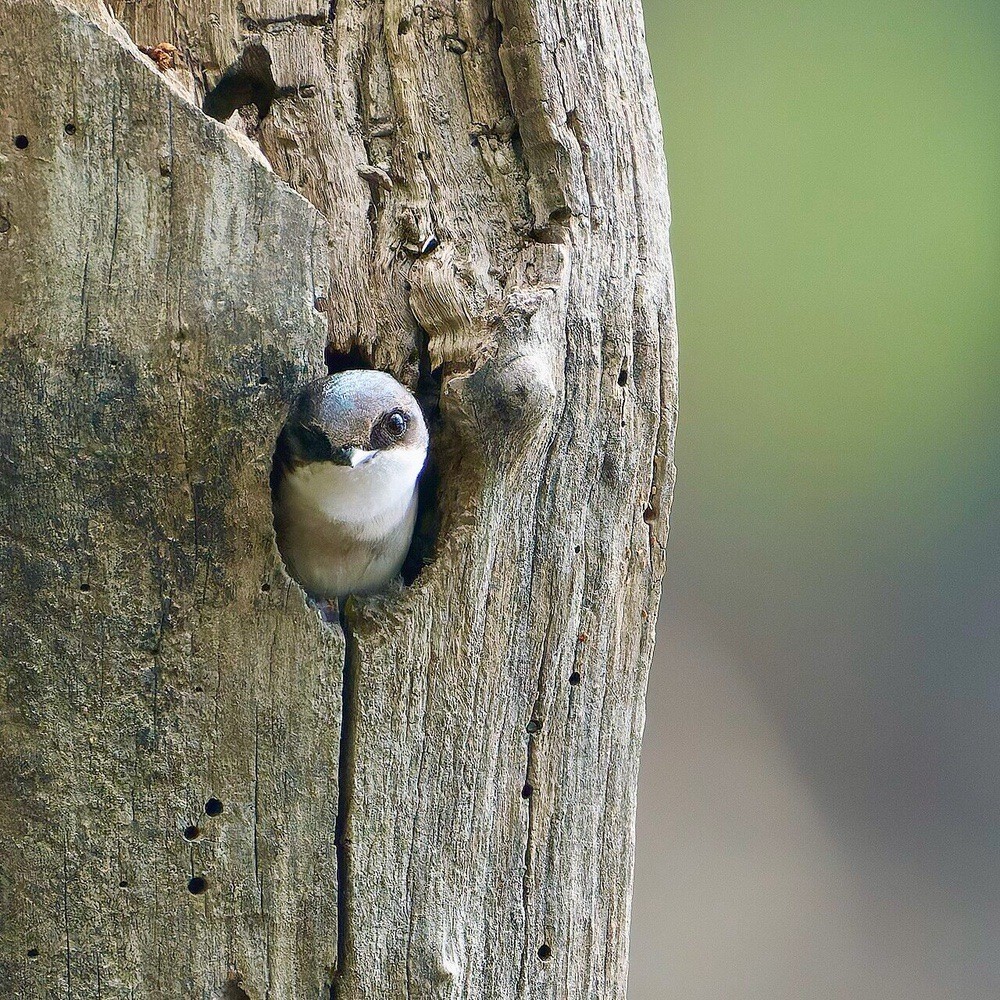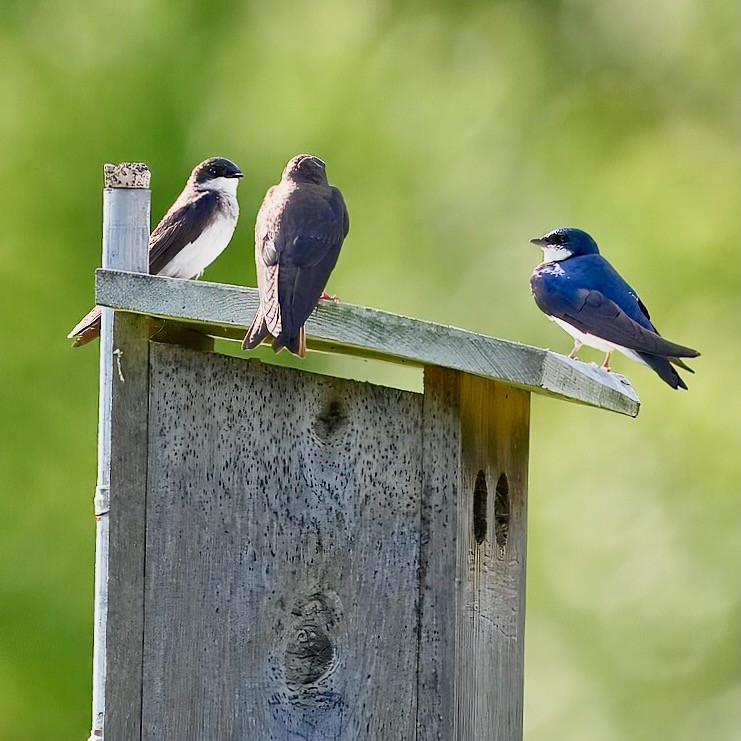Tree Swallow
The Tree Swallow is sighted sporadically at Salter Grove from late April through August, either flying overhead or skimming the water's surface near the boat launch, the causeway, or along the Marsh Trail. It breeds in North America ranging from the Canadian treeline to northern Tennessee, wintering along the Gulf Coast and portions of Mexico.
The Tree Swallow has iridescent blue upperparts that contrast with white underparts, and a squared-off tail. In comparison, the more commonly seen Barn Swallow during the breeding season at Salter Grove, has similarly dark and bluish upperparts, but has a rusty forehead and chin, cinnamon underparts, and a long forked tail.
Like other swallows, the Tree Swallow is an aerial insectivore, feeding on flying insects in flight. Its prey range in size from smaller than a grain of sand to two inches. However, unlike other swallows, 20% of its diet consists of seeds and berries, especially during the colder months, with fruits of the small bayberry being a dominant component. It is thus not surprising that it is the earliest swallow to arrive north and able to survive cold spells before insect prey populations proliferate.
Given that it usually feeds close to its nesting site, the low frequency of sightings during the breeding season at Salter Grove suggests that the park lacks suitable nesting cavities. The Tree Swallow is not equipped with a beak that can excavate dead wood and historically, old woodpecker holes were preferred as nest sites.
However, the Tree Swallow's adaptability in using man-made nest boxes have increased populations where tree holes have not been available. An experiment on Cape Cod during the early 1930's showed that the number of breeding pairs increased from 4 to 60 pairs after 98 nest boxes were installed within a study area.
At the end of the 19th century in Rhode Island, the Tree Swallow was considered a common summer resident, very abundant during fall migration, with even one winter record. However, there has been a 50% population decline across North America since 1966. Contributing factors include habitat alteration along migration routes and wintering grounds, and declines in insect prey due to agricultural practices and heavy use of pesticides. Adding nest boxes may help to reverse the decline, but only if insect prey populations remain intact.
Because of warming trends, Rhode Island is likely to lose most of its breeding Tree Swallows as they are expected to shift further north to northern Canada and Alaska. However, coastal Rhode Island and southern New England will nonetheless continue to be important stopovers for Tree Swallows during migration.
For more information:
https://www.allaboutbirds.org/guide/Tree_Swallow
https://www.audubon.org/field-guide/bird/tree-swallow
https://en.wikipedia.org/wiki/Tree_swallow
https://www.birdsbybent.com//////ch81-90/treeswallow.html
https://treeswallows.com/tres/
Clarkson, C. E., Osenkowski, J. E., Steen, V. A., Duhaime, R. J., and Paton, W.C. (2023) The Second Atlas of Breeding Birds in Rhode Island. Rhode Island Department of Environmental Management Division of Fish and Wildlife. pp. 266-267.
Howe, Jr., R.H. and Sturtevant, E. (1899) The Birds of Rhode Island. p. 15, 76.

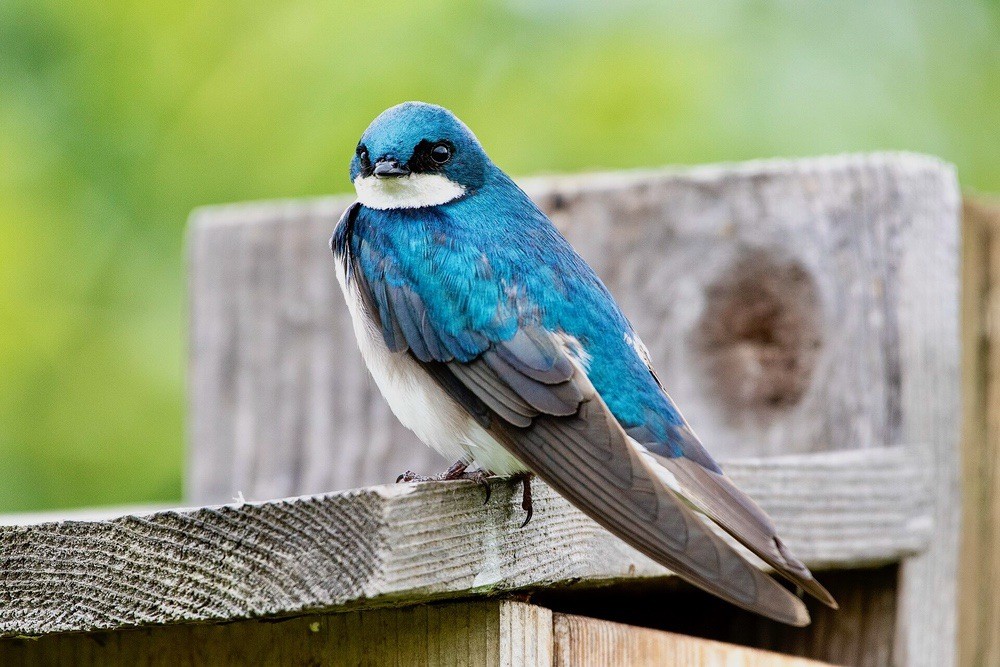
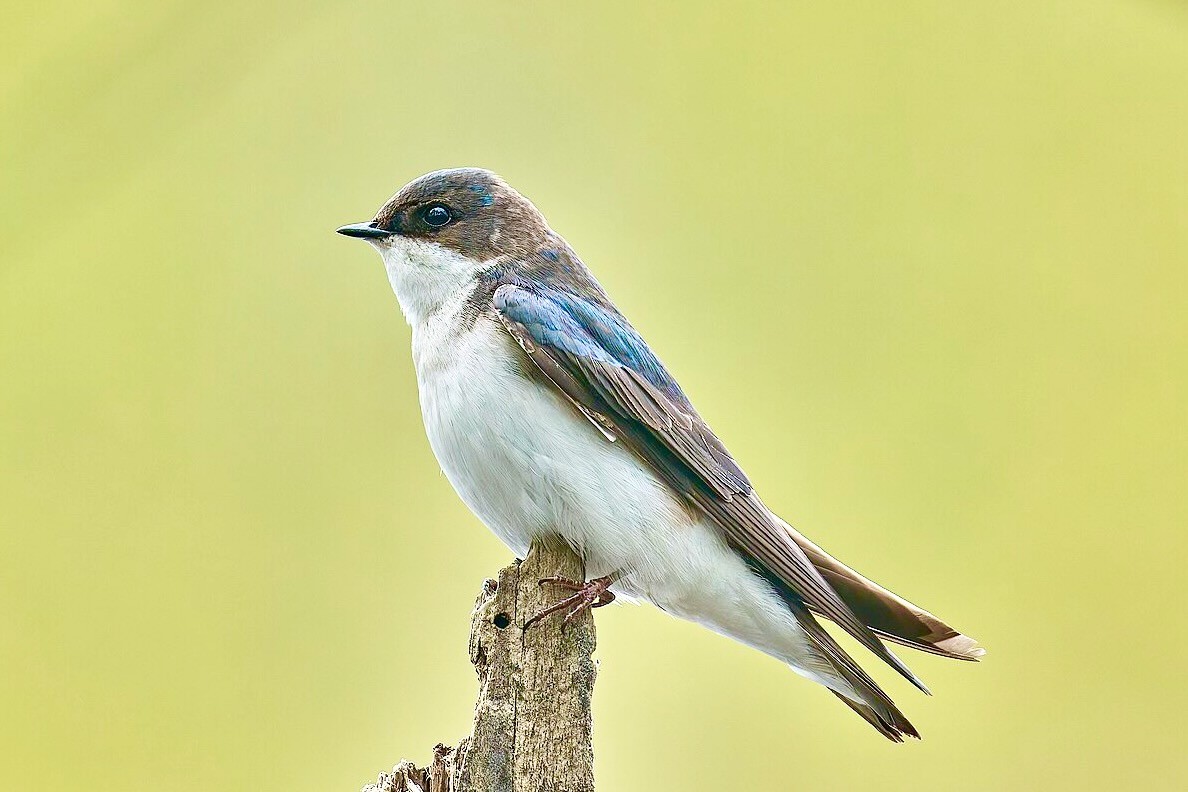
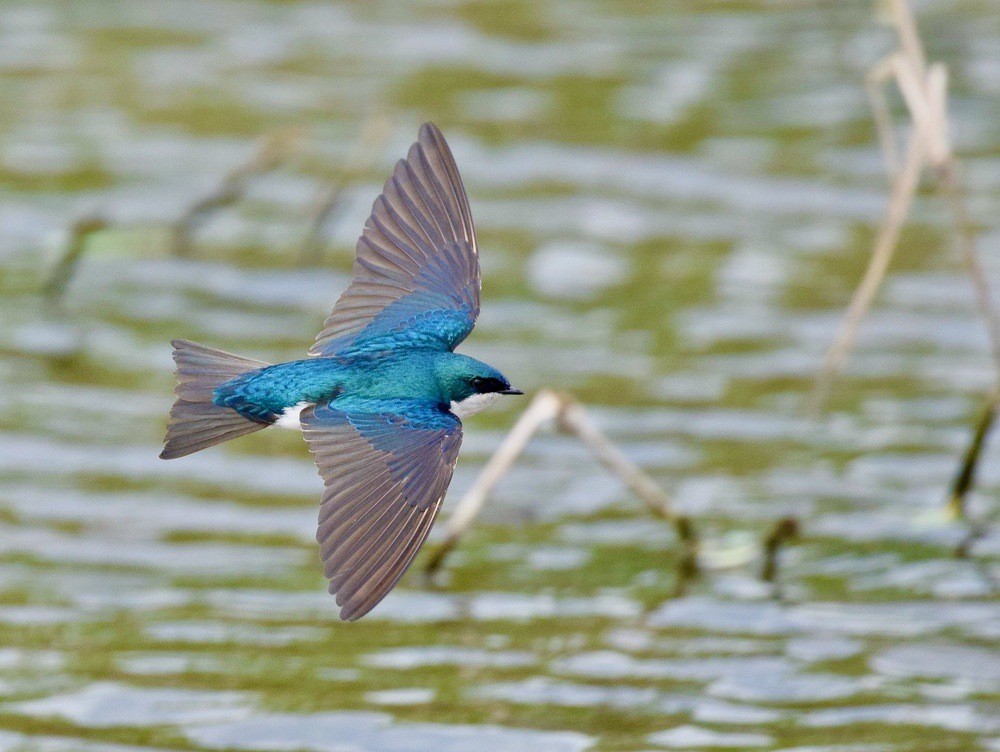
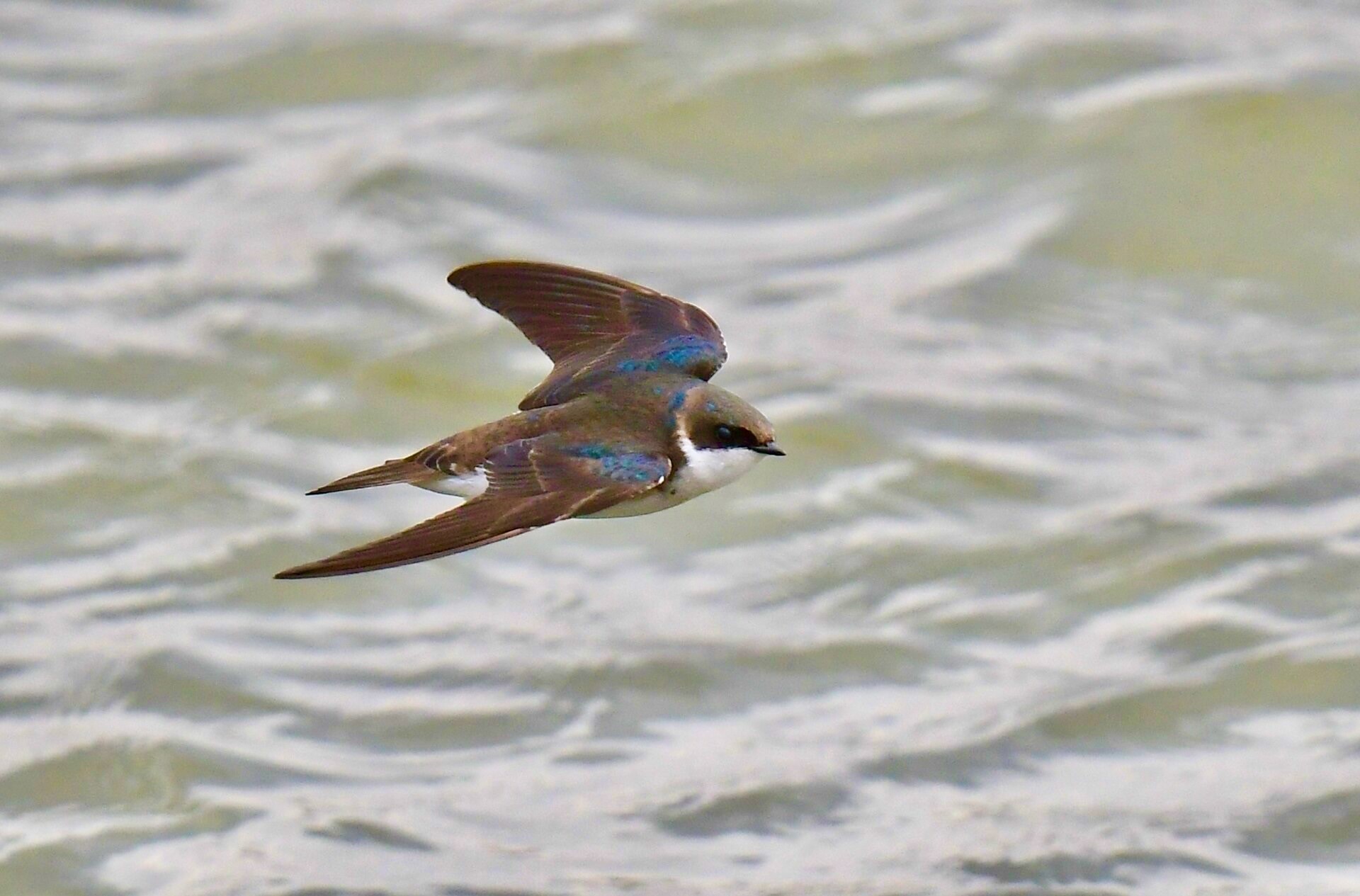
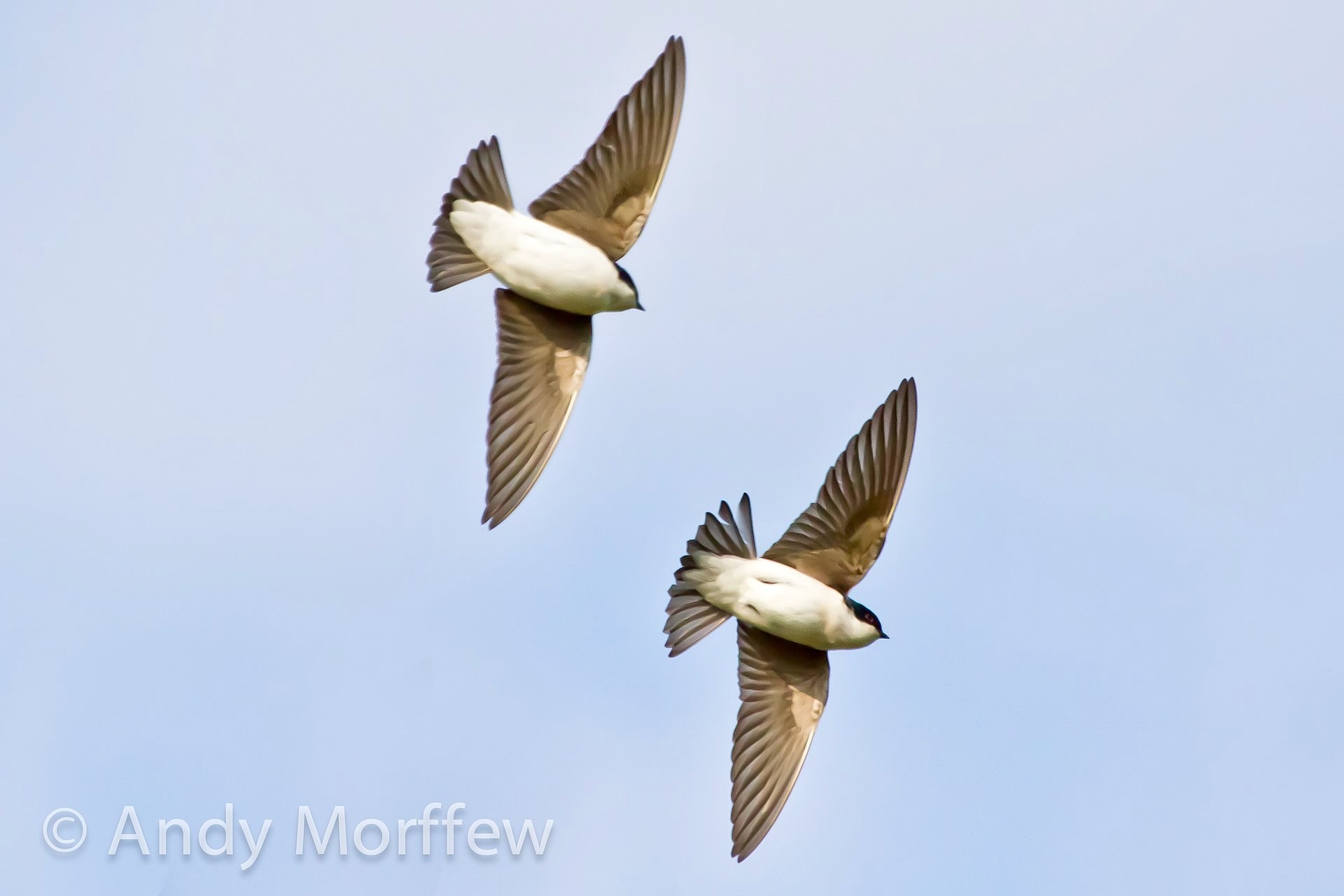
.jpeg?w=350?blur=10)
